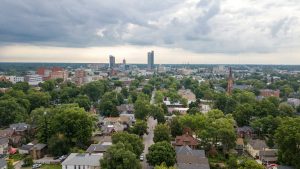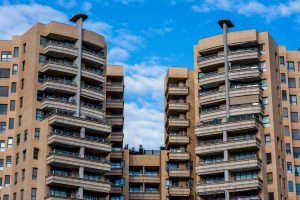Sustainable Community Development: Creating Livable Neighborhoods
Sustainable community development is an all-encompassing concept that focuses on creating livable neighborhoods that are both socially and environmentally sustainable. It is a holistic approach to community development that takes into consideration the needs and well-being of its residents, while also considering the impact on the natural environment. In recent years, sustainable community development has become an increasingly relevant topic as cities and towns across the globe grapple with issues such as climate change, urbanization, and social inequality. In this article, we will explore the importance of sustainable community development and how it can lead to the creation of livable neighborhoods for all.
The Role of Sustainable Community Development
At its core, sustainable community development is about finding a balance between the three pillars of sustainability – social, economic, and environmental. This approach encourages social equity, economic prosperity, and environmental responsibility. In other words, it is about creating communities that provide a good quality of life for its residents, while also preserving resources for future generations. This is particularly important in today’s world, where the actions and decisions we make now can have a lasting impact on the future.
One of the main goals of sustainable community development is to create livable neighborhoods. A livable neighborhood is one that is safe, healthy, and has access to necessary services and amenities. It is a place where people want to live, work, and play. By focusing on sustainability, we can ensure that these neighborhoods are not only livable now but will continue to be so in the future.
Creating Livable Neighborhoods through Sustainable Community Development
1. Promoting Social Equity
Sustainable community development puts a strong emphasis on social equity. This means ensuring that all residents, regardless of their race, income, or social status, have access to basic needs such as affordable housing, healthcare, education, and transportation. By promoting social equity, sustainable communities are more inclusive and provide opportunities for all residents to thrive.
One of the ways this is achieved is through the implementation of mixed-income housing developments. These developments bring together people of different socio-economic backgrounds, creating more diverse and resilient communities. Additionally, sustainable development also involves stakeholder engagement, allowing residents to have a voice in the planning and decision-making processes that affect their community.
2. Promoting Economic Prosperity
Sustainable community development also focuses on promoting economic prosperity. This can take many forms, such as creating job opportunities, supporting local businesses, and implementing sustainable economic models. By fostering economic growth, sustainable communities can provide residents with the resources they need to thrive and improve their quality of life.
One example of this is the incorporation of green spaces and sustainable features in urban planning. Not only does this improve the overall aesthetic of the neighborhood, but it also contributes to the local economy by creating jobs in industries such as green infrastructure and sustainable building.
3. Promoting Environmental Responsibility
Finally, sustainable community development is committed to promoting environmental responsibility. This means reducing the impact of human activities on the natural environment. By implementing sustainable practices, such as the use of renewable energy sources, waste reduction and recycling initiatives, and protecting green spaces, sustainable communities can minimize their ecological footprint.
One of the ways this is achieved is through the adoption of green building practices. This involves constructing buildings and homes that are energy-efficient, use sustainable materials, and produce less waste. These buildings not only benefit the environment but also provide healthier living environments for residents.
The Benefits of Livable Neighborhoods
Livable neighborhoods bring numerous benefits to the community and its residents. By incorporating sustainable practices, these neighborhoods are able to provide long-term benefits, such as:
1. Improved Quality of Life
Livable neighborhoods are designed with the well-being of their residents in mind. This means that they are safe, healthy, and provide access to essential services and amenities. By focusing on sustainability, these neighborhoods also ensure that these benefits are long-lasting.
2. Increased Resilience
Sustainable communities are able to adapt to changing conditions and emerge stronger in the face of challenges. This is because they incorporate practices that promote social, economic, and environmental resilience. This means that they are better equipped to handle issues such as natural disasters, economic downturns, and social disruptions.
3. Enhanced Community Spirit
Livable neighborhoods often have a strong sense of community. This is because they promote social interaction and engagement through shared spaces, events, and activities. By fostering a sense of community, sustainable neighborhoods are able to create a better sense of belonging and cohesion, leading to happier and more satisfied residents.
The Future of Sustainable Community Development
The need for sustainable community development has never been more pressing. As our world continues to face the challenges of urbanization, climate change, and social inequality, we must turn to sustainable solutions to create better, more livable neighborhoods. By incorporating sustainable practices into our development strategies, we can ensure a better future for our communities and for generations to come.
Sustainable community development is about more than just creating livable neighborhoods – it is about creating a better future for all. By prioritizing social equity, economic prosperity, and environmental responsibility, we can create communities that are not only sustainable but also enjoyable places to live. It is up to all of us to embrace sustainable practices and work towards creating truly livable neighborhoods for all.










